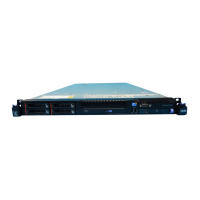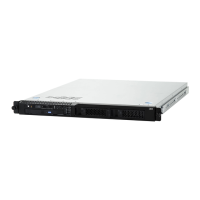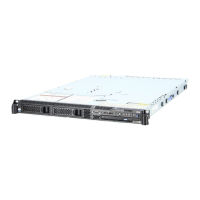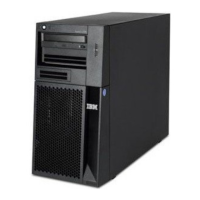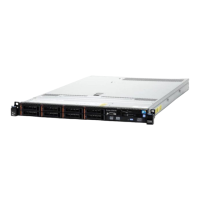v Exchange the following parts one at a time until you determine the failing
item:
a. Console
b. Alternative console
c. Cables
d. Workstation IOA for the console
e. The multi-adapter bridge (see “MA_BRDG” on page 554.)
This ends the procedure.
14. The console, cables, or the workstation IOP card is the most probable causes
for this failure. If the console is connected to the system by a link protocol
converter, the link protocol converter is possibly the failing item.
Use one or more of the following options to correct the problem:
v See the service information for the failing displays for more information. If
a display is connected to the system by a link protocol converter, see the
link protocol converter information to attempt to correct the problem.
v If you have another working display, you can exchange the console and
perform an IPL to attempt to correct the problem.
v Exchange the following parts one at a time until you determine the failing
item:
a. Console
b. Workstation IOA
c. The multi-adapter bridge (see “MA_BRDG” on page 554.)
d. Twinaxial attachment (cable)
This ends the procedure.
15. To continue problem analysis, use a port tester, part 93X2040 or 59X4262,
which you may have with your tools or the customer may have one. The port
tester has either two or three lights.
Is a port tester available?
No Yes
↓ Go to step 18 of this procedure.
16. Check or exchange the cables from the system to the failing display.
Did this correct the problem?
Yes No
↓ Go to step 12 of this procedure.
17. You corrected the problem.
This ends the procedure.
18. DANGER
To prevent a possible electrical shock, do not use the port tester during
electrical storms. (RSFTD006)
To use the port tester to isolate the problem, perform the following:
v Verify that the port tester is operating correctly by doing a self-test. A
self-test can be made at any time, even when the port tester is attached to a
port or cable. Perform the following steps to do a self-test:
a. Move the selector switch to the center (0) position.
Twinaxial Workstation PIPs
Chapter 3. Problem Isolation Procedures (PIPs), Failing Items, and Symbolic FRU Isolation 469

